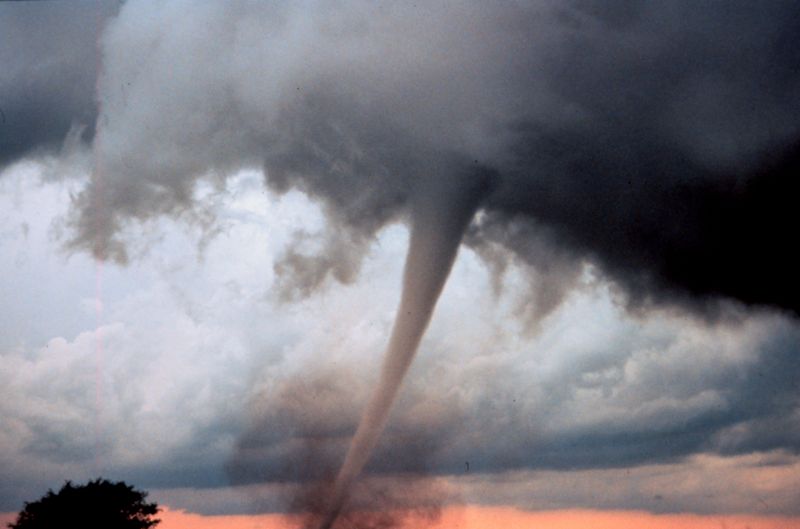Prepare Now: Data about Pets and Evacuations During Severe Weather Events


Barrett Slenning, an associate professor in the NC State College of Veterinary Medicine’s Department of Population Health and Pathobiology, is an expert in epidemiology and animal biosecurity risk management.
North Carolinians know that severe weather can strike at almost any moment. Spring is the main season for severe thunderstorms and tornadoes in our state—that’s why March hosts “National Severe Weather Week”. It is important for all of us to pay attention to preparations now before the season starts, and part of that preparation involves animals under our care.
[section_subtitle] North Carolina’s Spring Weather.[/section_subtitle]
According to the National Weather Service, between 1950-2005 an average of just over five tornadoes and 44 severe thunderstorms struck Central NC ach year. More than half occurred from mid-March through mid-June. Two-thirds hit in the afternoon and early evening, but more than 13% struck between 9 p.m. and 6 a.m. This means most springtime severe weather events hit when many of us are away from home at school or work, but about one in seven hit while we’re at home and likely in bed. For just 2013, the entire state recorded 10 tornadoes and more 450 thunderstorms and damaging wind events that injured many North Carolinians, killed three people, and caused some $17 million in damages, combined. The threat of springtime severe weather is real to our families and property, and it also threatens the animals that depend on us.
[section_subtitle] What’s it got to do with pets? [/section_subtitle]
A fair amount of research has evaluated what happens to pets during sudden severe weather, especially when evacuations are ordered. For instance, we will look at the lessons learned from one study done in 2001 that reviewed a sudden train-related chemical spill in Wisconsin. Such “rapid-onset” disasters do not give people much time to prepare or respond, making these events similar to severe thunderstorms and tornadoes. Hurricanes (our main threat in summer and fall) are considered “slow-onset” disasters, since people typically have days to prepare. Here are three facts uncovered in Wisconsin:
- 60% of dogs and cats were not able to be evacuated by their owners.

- Of those pet owners who left animals behind, more than 40% attempted to come back to rescue their pets—putting themselves and first responders at risk.
- Evacuation with cats was only half as likely as evacuation with dogs. Households with cats were also less likely to evacuate their dogs.
Typical reasons offered for not evacuating pets were that the owners were away when the event occurred, that they thought it would be safe for their pets to stay, that they expected to be gone a short time only, that they had too many animals to manage, and mostly, that the owners had not done any preparation for such an event.
Why does it seem that cats are a special problem in these rapid-onset disasters? It turns out that more than half of the owners simply couldn’t catch their cats. This may help explain why being a cat owner also meant a household was less likely to evacuate their dogs: they could have spent so much time trying to catch the cats that they simply ran out of time to get anything else before they had to evacuate their families. Also, even if they caught their cats, people often could not safely transport the animals: few had cat carriers. Most dogs can have a rope or lead put around their necks and be led or carried to a vehicle. Without a good carrier available, however, cats are much more apt to fight and injure the people trying to save them. Hence, cats get left behind and often suffer as a result.
[section_subtitle] What does this mean for me and my pets?[/section_subtitle]
The above information helps us to better plan for our own animals in two ways.
 First, earlier warning is better warning. Since 13% of springtime severe weather events hit North Carolina during the night and early morning, get a weather alert radio or download weather alert apps for your phone. Weather alerts will go off when the severe weather is likely, giving you and your family valuable time to get things ready.
First, earlier warning is better warning. Since 13% of springtime severe weather events hit North Carolina during the night and early morning, get a weather alert radio or download weather alert apps for your phone. Weather alerts will go off when the severe weather is likely, giving you and your family valuable time to get things ready.
Second, pull together the equipment you’ll need to move your pets today, and put it in an easy to get to place. Most important: If you have cats (or birds, or lizards, or …) be sure you have species-appropriate carriers for them. These should be in a readily accessible room or closet, and all members of the house need to know where they are.
In addition—though not part of the above research—be aware North Carolina dogs and cats are required to have current rabies vaccinations. Keep animal identifications and rabies tags and certificates in an obvious place as a shelter will need them to admit your pet. Lastly, if you’ll be gone for any length of time, some food, dishes, medications, and bedding or toys will go a long way towards decreasing you pets’ stress.
There’s much more to being prepared—there are numerous on-line resources from the NC Department of Agriculture, the National Oceanic and Atmospheric Administration, American Kennel Club, the Red Cross, Federal Emergency Management Agency, and others— but we’ve learned some new things:
>Early warning. >Carriers to fit your animals. >Vaccine certificates and paperwork.
Prepare now and know you and your animals will be ready to cope with the next springtime severe weather event.


